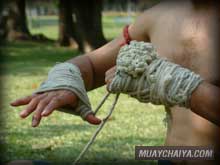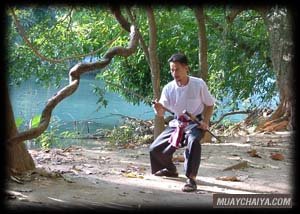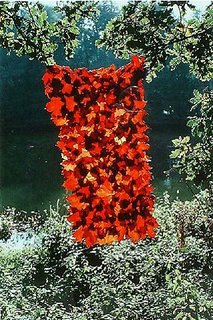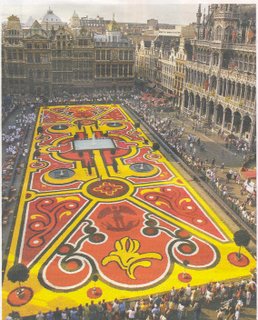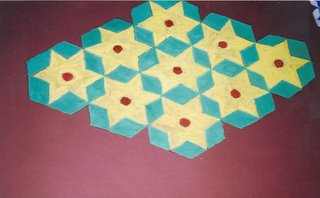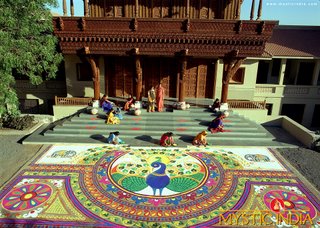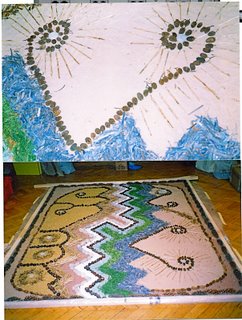
Muay Thai-Style Throw
As earlier mentioned, Muay Thai is the Crowning glory of the martial arts. Our warrior ancestors ingeniously invented, devised and modified a complete apparatus of defence and offence, from fist, foot, knee and elbow to throw
The world recognizes judo as the foremost from throwing. This is not untrue, if we speak of a martial art which employs exclusively body throwing that is assumed as a defensive art.
The reason why throwing is not so popular among Thai boxers, in spite of the written tenets for using it do outsmart an attacker, is probably because Thai pugilism provides myriad and diverse options of winning a fight, which may be more viable, less energy-sapping and swifter. It is not that Thai expert boxers do know how to throw. They are able to should they wish.
Every throw in Thai boxing can be deadly and lethal if you use it correctly. That was why, unless driven beyond tolerance and humiliation, no one would choose to use it on a compatriot or a fellow human is being.
Muay Thai was invented by our ancestors, not as a means of self defence, but as a national defence
Another person for whom I had the highest respect was Srithorn Sriyapai, who was Master Khet’s daughter. She used to tell her farther’s feats.
When the master was his sixties, he was teaching his pupils about several kinds of kicks.
At that time, a friend of his pupil who was a professional boxer with much fighting experience at the Rajadamnoen stadium found this old boxing teacher so in sufferable that he wanted to give that old man a lesson. He arrogantly approached and asked to aim a kick the old master, just to see how well the pugilist expert could withstand and solid shanks of a younger man.
The Master kindly obliged and offered himself to be kicked at will.
The assailant kicked hard and fast, with the kind of kick that would inflict the kind of injury you can only imagine on a sexagenarian if hit right directly and with full force.

Faster than Srithorn or anyone else could see, the old man threw his attacker and haughty kicker fell supine with his head hitting the floor hard. He mustered his strength to get up and dust himself off, composed himself and walked back to his seat, trying to give the impression that he was thinking “I can get by without any pain at all.” He had learned his lesson, though, and would never dare repeat a kick on the Master.
After a short while, Srithorn noticed he has bleeding from the ear. She took him to the hospital to treat the injury. Fortunately, he was saved before the condition could deteriorate and get complicated.In truth, this man’s injury was not the result of Master Khet’s uncivil act. It was his own obnoxious and malicious act of violence that had ended in such dire consequence.
If only he hand asked to test his kick in all modesty, like a pupil to the master, like a younger to an elder, with respect for seniority, he would have gained knowledge without injury.
The principle of Thai defensive art is based on reaction towards the attacking force, like the Buddhist maxim that says “Distress inflicted upon the other will come round to the perpetrator,” the idea of which is not far from English proverb, “As you sow, so shall you reap.”
Reaching up to hurl your shin at full force at the neck of a person who is bending low to take the kick is simply stupidity and an underestimation of your rival. As Master khet always taught his pupils, when you see a crouching tiger, don’t thing he’s afraid of you”

The person who was lowered himself to tempt the opponent into kicking his neck has neck has several ways of escaping the aimed foot.
For example, you can bend down to let the flying foot past over your head. Or you can lower yourself even lower and when the kick flies past your head, you can catch it with a hand while stretching up to full height. The kicker will lose his balance and fall backwards. The higher and the harder the kick, the more off balance he gets. He might even be flipped over and knock his head on the floor.
Or you can use the heel of your palm to counter the kicking leg above the knee. Suppose he kicks with the right shin toward you left side, you can receive it with the heel of you right palm while adjusting the body angle (provided you use a leading left guard), but you have to keep your left hand over your ear and your left arm close to the trunk, as a double precaution, in case it slips or is flung back.
When pressed above the knee, the kicking leg will disable. You have to move your left hand from ear and pass it under your opponent’s calf, lifting his leg to your shoulder, while thrusting forward and stretching all the way. At the same time, your right hand should pass over to rest on his neck. This move amounts to automatic pressing for throwing.
By this method, if the catcher does not let go but lets himself fall with the kicker, the kicker will lie underneath with the one being kicked on top. You can press your elbow on the bottom of his breastbone or in his midriff with your knee on his pubis. This is called throw and stack.
This is the same move the Chaiya boxer, Nai Plong Chamnongthong from Caokhun Vachisatyarak’s (Kham Sriyapai) Stable, used to defeat the Korat boxer, Nai Plong Prabsabok Muen Muay Mee Chue in the service of the Department of Recruited Deputies.
This move can also be altered with a slight adjustment of the angle to constitute a deadly throw and stack that can be fatal.
It can be used to counter kicks and fend off knees and was know among Master Khet’s Pupils as the arse-kissing move.
‘Orge abducting a damsel’ was another throw in Muay Thai. This was used to counter a direct jab. You dodge the punch by getting out of reach behind the arm of the hitter and then locking your arm with the jabbing arm, twisting you hip to take the weight while completing a throw as in a judo throw. When I was little, I often saw boxers using one of these throws but this move seems to have disappeared some time ago.
Current boxing only makes use of ‘ploughing’ which is a new tactic which emerged less than 10 years ago. When he saw a boxer holding on to an opponent’s leg, Master Khet call this move, ‘Luring a Tiger into Your Home.’
“A tiger lives in the jungle, son,” he would say, “if you drew him into your home, he would eat you up alive.”
As l learned from him, when you can hold up his legs in this manner, why you would want to plough him to make matters more difficult? You are not a buffalo and pushing him around the ring like that does not seem to inflict any damage on your opponent.
What you should do is to grip him tightly around his calves and kick up your leg at full force until you fall backwards on the floor with all your weight. And that will do this trick. Just imagine what will happen to the legs in your grip.
This throw is easy to use and most suitable for countering a jumping knee or floating knee which your opponent serves you like a delectable dish on a platter. Do not be afraid to chew on it.
If he hurls his right knee at you, receive it in your left palm, or push it away by tugging under the knee while stepping with your right foot and adjusting the angle, pushing under the chin or neck, not unlike the counter move for a kick.
The soaring hanuman who aimed to break the Elephant Erawan’s neck would be doomed the flip over backwards and fall flat on the floor, passing out on the spot, as if stuck by the piercing arrow of the defending Orge Indrajit on the elephant’s back.
Thai Always teach their kids: you must be powerful but unassuming, hide your blades in the sheath, and hide your claws like a tiger, don’t flaunt your tail like scorpion.
Accordingly, Thai-style throwing is subtly disguised. The fundamentals of Muay Thai throwing can be used even on a buffalo.
The Master once asked me:
‘Have you ever toppled a buffalo, son?
When I was little, I used to hang out in the paddy fields with my pals. To impress them I boasted.
“I’ll show you how to topple a buffalo.” No one believed I would be able to do this.
I approached it from the front, seizing both of its horns and twisting them to the right with full force. Feeling the pressure, it resisted and tried hard to twist back to the left.I then pushed it to the left with its own force. It crashed flat sideways and to the left, got up frightened and sped away. My pals said: “Khet, you have a helluva lot of strength.”
In fact, it was not my own strength, it was the buffalo’s. It actually toppled itself.”
This is the fundamental idea of Muay Thai. Small can topple big and the few can defeat the many.
Copy few parts From Siamese Boxing author by Vallabhis Sodprasert




